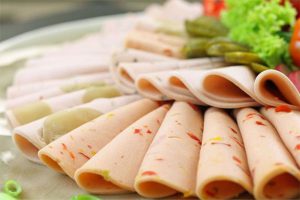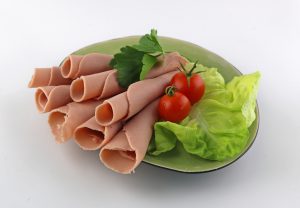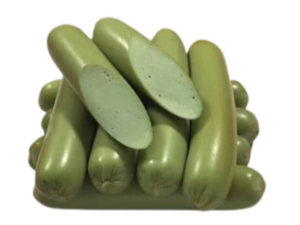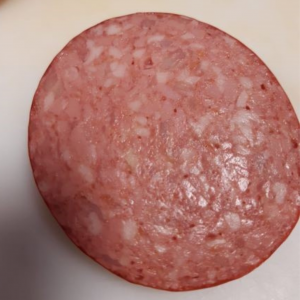Why making industrial sausages?
Sausage is a convenient food available in a great number of varieties and flavours. Sausages are an excellent source of high-quality protein. Sausage is a meat product that is usually made of emulsified and or ground meat. The sausage dough is stuffed into a casing. There are many kinds of sausages and in different diameters and lengths.There are 2 important reasons for making sausages: preservation of meat and the waste processing of meat.
In the past, piglets were fattened with leftover food until they were slaughtered as large pigs in the cold season. As the slaughtering was not spread over the year but took place in the same, short period of time, the meat had to be preserved to be eaten the following year. In the European climate, it turned out to be possible to treat pork with salt in such a way that it remained good for months (this is much more difficult for meat from other animals). Sausage making is therefore mainly a European tradition. Read more about the history of sausage making
The other reason is residual processing, and this happens all over the world. When the ‘beautiful parts’ of an animal for slaughter have been cut out (what they are depends on the culture, the quality of the animal and the preferences of the customers), pieces and offcuts remain. These are ground into minced meat or made into sausages. Blood, liver and other organs are also part of the slaughter animal. They are so perishable that they must be processed very quickly, or they taste too penetrating to be eaten pure. Making sausages from them is then a good solution.
Sausages all over the world
The process of making sausages is basically the same. You mix pieces of meat with spices and put them in an (artificial) casing without creating air bubbles.
Most sausages are made from pure pork, or from a combination of pork with beef, veal or poultry.
Which meat is used for sausage production often depends on the animals that live in the different locations of the world. In addition, local customs and religious beliefs have a great influence on the choice of meat.
Norway is known for its use of different meats such as moose, reindeer, mutton, lamb, goat, horse meat, offal (heart, liver) and blood. Norwegian sausages such as Faremorr, Sognemorr gilde, Stabbur and Tiriltunga contain beef, lamb and horse meat and are heavily smoked.
In Germany, sausages are often made from equal quantities of pork and beef, in Poland pork is more popular.
Hungarian, Italian and Spanish sausages contain mainly pork meat.
People living in remote areas (e.g. Central Alaska) can use game meat such as moose, bear, reindeer or rabbit.
In Alaska, moose, bear, reindeer and caribou are the most common animals and their meat is used to make sausages.
Llamas have adapted well to the high Andes mountains in South America and are popular meat in Bolivia and Chile.
Ostrich is commonly consumed in South Africa.
Sausages are made from sheep, goats, camels, horses and other meats, but these meats will hardly appeal to most Western consumers.
Read more about the classification of sausages
Eating sausages
Sausage can be eaten at many times of the day:
- It is an important component of quick and easy meals or as part of a BBQ.
- A sausage sandwich is delicious as a lunch or snack
- Sausage combines well with wines and beers and is therefore increasingly used as a tasty snack with drinks. Given the many types of sausage, the possibilities are enormous.
- You can add pieces of sausage as flavouring to dishes pizza, pasta, oven dishes and much more.
The production of sausages is still the same today, but sausage recipes are becoming increasingly sophisticated. More and more gourmets are starting to appreciate these flavours and enjoy sausages. Eating sausages is hip
Shelf life of sausages
Sausage is a safe product. Thanks to the preserving effect of salt and the Ph, harmful bacteria are eliminated. Smoking, boiling or drying the sausage also has a preserving effect, which makes the sausage last longer, even in warm countries. Sausage is a convenient foodstuff that is available in many varieties and flavours. The popularity of sausages is increasing.
Nutritional value
Sausage is an excellent source of high-quality protein, containing all the essential amino acids in the right quantities that are needed for the growth, maintenance and repair of body tissues. Sausage also provides significant amounts of vitamins and minerals.
TQM Quality Control Parameters sausage making
Sausage making is a continuous sequence of events. Each step in the proper sequence is important to a successful operation. Read more about why industrialized sausage production is a craft.






